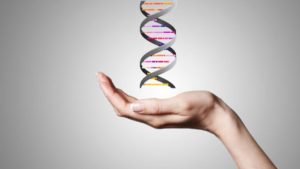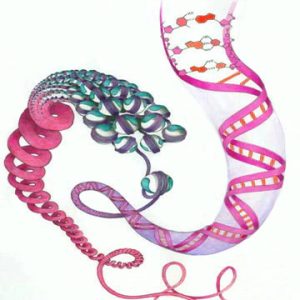If you take a look at a typical US elementary classroom, chances are at least one of the students is a twin. In a society where women are giving birth later in life and have access to fertility treatments, twins and triplets are being born at higher and higher rates.
Our educational system, however, has failed to address that the needs of multiples must be considered carefully. Twins have a unique bond that must be considered when children start school. When a student enters kindergarten, they are facing a drastic change in their life, and having a twin adds another aspect to that. In some cases, separation may be traumatizing, while in others separation would create a better learning environment.
Schools have failed to evaluate twin classroom placement since the modernization of western society’s educational system. According to Professor Jan Lacina of Texas Christian University, the basis forming many policies about twin classroom placement is research that was later discredited. Helen Koch performed a study following the development of twins by measuring their IQ, but she failed to do a blood test to determine if twins were monozygotic (identical) or dizygotic (fraternal). While this may seem insignificant, there is often a much stronger bond between identical twins than between fraternal twins.
Koch’s research is still the basis for many school policies regarding twins, while little new research is being conducted. New studies are key to determining what is truly best for twins in school, but often times schools are simply sticking with their outdated policies. However rare these new studies may be, they provide new insight into an often ignored subject.
A study published in Twin Research assessed 1116 pairs of twins in England and Wales to determine if separation caused issues. Both identical and fraternal twins were assessed by teachers for symptoms of ADHD and assessed with the Child Behavior Checklist Teacher Report Form, the Revised Rutter Scale for School-Age Children and the Strengths and Difficulties Questionnaire, an IQ test, and the Test Of Word Reading Efficiency. Both identical and fraternal twins were impacted by forced separation, but identical twins faced the greatest problems. Identical twins scored higher levels of withdrawal, depression, and anxiety when separated.
Another study tracking the development of twins in school was published in Twin Research and Human Genetics. Researchers studied 1505 children in the U.S., Australia, Norway, and Sweden – all of whom were either a twin or triplet – and tracked their reading levels through kindergarten, first grade, and second grade. The researchers found the difference in literacy between separated and non-separated sets to be very insignificant, especially after controlling for pre-kindergarten literacy ability. However, the lack of academic difference does not mean we can dismiss the emotional impact classroom placement can have.
Often when someone thinks of problems in school, they think of reading difficulty, poor understanding of math, or any other academic issue. However, emotions and well-being can impact a student’s mental health, as well as academic performance. Mental health and academic performance go hand-in-hand, so we cannot disregard potential issues simply because a student continues to perform well in class.
By taking a look into current research, Lynn Melby Gordon was able to see the drastic differences in what principals see as best for twins compared to kindergarten teachers, parents of twins, and twins themselves. The most often stated reason for separating twins is to allow for individual development, while the most often stated reason for keeping twins together is to keep children feeling unafraid in the new environment of kindergarten. Only 5% of parents surveyed agree that there should be a policy for every set of twins, especially as they develop. Earlier on in school, twins are more likely to want to remain with their twin than in later grades.
This difference in beliefs, especially between principles and twins, show just how difficult it can be to view something from a different perspective. Principles hold power in schools that twins don’t even have a fraction of, meaning they often believe they know what is best for every student. In order to remedy this issue, a conversation must be started with leaders in schools to emphasize the importance of evaluating every student as an individual.
Though some sets of twins are afraid of being apart from each other, others can become very competitive and want a break from each other. In Gordon’s article, some twins wanted separation to be independent, to develop one’s own identity, and simply to just get some time apart from each other.
Each set of twins is different from the next. Some rely on each other for everything, while others fight over everything. It can also be easy to forget that twins, especially identical twins, are individuals. They are not the same person and cannot be treated as such.
To best help twins in primary school, schools must have lenient policies. By solely separating or keeping twins together, schools are failing to give children their best learning environments. Each set of twins – and higher-level multiples – must be addressed individually, doing what is best for every child. A one-size-fits-all policy, for any aspect of education, will ultimately fail students.
By: C. Campbell
References:
Coventry, W., Byrne, B., Coleman, M., Olson, R., Corley, R., Willcutt, E., & Samuelsson, S. (2009). Does Classroom Separation Affect Twins’ Reading Ability in the Early Years of School? Twin Research and Human Genetics, 12(5), 455-461. doi: 10.1375/twin.12.5.455
Lacina, J. (2010). Review of Research: School Placement and Separation of Twins: A Review of Research. Childhood Education, 86(3), 172–174. doi: 10.1080/00094056.2010.10523142
Polderman, T. J. C., Bartels, M., Verhulst, F. C., Huizink, A. C., Beijsterveldt, C. E. M. V., & Boomsma, D. I. (2009). No effect of classroom sharing on educational achievement in twins: a prospective, longitudinal cohort study. Journal of Epidemiology & Community Health, 64(01), 36–40. doi: 10.1136/jech.2009.091629
Tully, L., Moffitt, T., Caspi, A., Taylor, A., Kiernan, H., & Andreou, P. (2004). What Effect Does Classroom Separation Have on Twins’ Behavior, Progress at School, and Reading Abilities? Twin Research, 7(2), 115-124. doi: 10.1375/twin.7.2.115
Image Credit:



